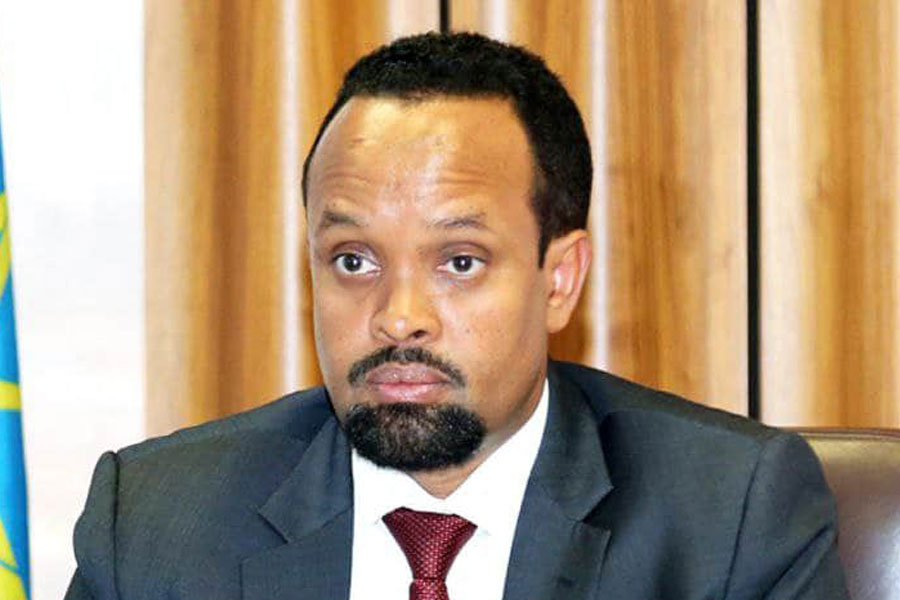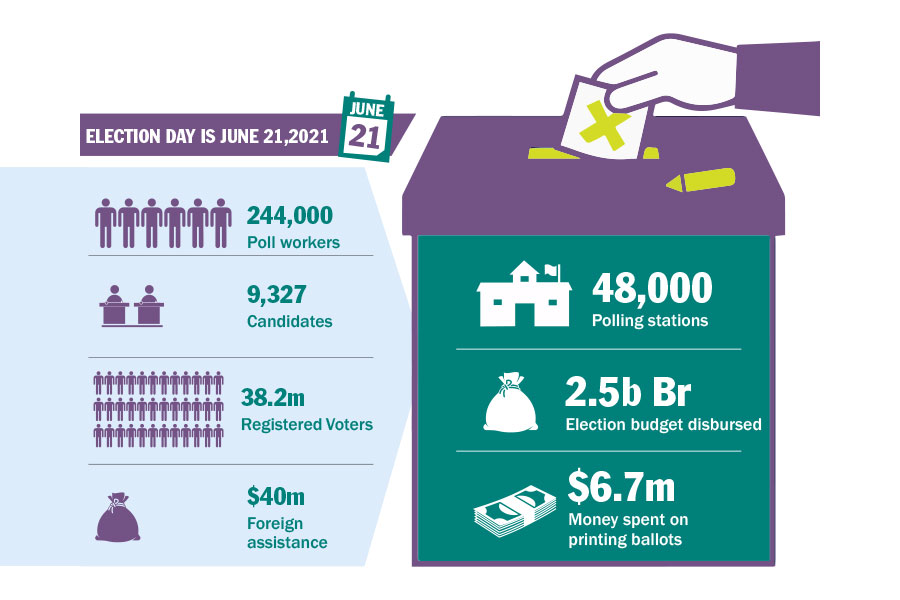
Fortune News | Jan 19,2024
Aug 14 , 2021.
When war broke out in Ethiopia’s northern region last year on that fateful November day, few could have imagined how ugly it could get. Armed conflict is never a pretty sight, this much is known, but it only came clear later how low combatants would go to win the day. Incidents of massacres, with the lives of dozens or even hundreds snuffed out, were several. The rape of women was widespread, while the senseless death of civilians and the mindless destruction of property was a dime a dozen.
Today, 400,000 people in Tigray Regional State, 40pc of them children, face famine-like conditions. Over two million people have been displaced. Over 300,000 people in the Afar and Amhara regional states require emergency aid, with tens of thousands displaced from their homes. The horror of war continues.
How low could it possibly get?
Not low enough answered a recent incident in the Afar Regional State. Attacks were perpetrated against families sheltering in a health facility and a school earlier this month, with over 200 people killed, according to the United Nations’ Children Fund (UNICEF). Half of them were children, their lives robbed from them at an early age, for a war they neither asked for nor have any clue why it is happening.
The civil war, at this point, is scrapping the bottom of the barrel for every horror that can be inflicted upon human beings.
War is irrational and cruel; the consequence is horrific. War nurses only pain and fear.
Ironically, the cause and justification for war are not in short supply in the history of humanity. Many in the war camp, not just the combatants and army generals, but hawks see the enterprise as a biological and sociological necessity. They justify it as an obligation imposed on them, come what may as a result.
Let public opinion once reach a certain fighting pitch, and no ruler withstands it, William James, the 19th Century pacifist, observed of his time. He would have reinforced his conviction had he been alive to see Ethiopia today.
The hawks on each side of this violent and militarised conflict insist on victory at all cost. They may not say it directly, but their messages are clear: if innocent civilians, women and children stand in the way of military victory, then they are casualities in a war that should be expected. If their suffering inspires terror, radicalises enough youth for use as cannon fodder, if it helps one’s cause, they are worthy collateral damage.
There are no differences for accommodation but irreconcilable enemies to vanquish to these hawks on every side of the conflict and the war.
But it would be wrong to see them singularly in this manner. They are actually on the same side as long as they romanticise war. More importantly, they hold that peace can only be brought about if the other side is beaten to submission, a chilling assertion since this is a conflict fought along the faultlines of identity. Nothing short of wiping out a group perceived as an enemy will suffice to end it as a threat. They have constructed a false narrative that they are in an existential struggle; the end can only come when their side prevails and asserts an imposed peace. The clever among them see the futility of war, but they are trapped in the folly of its necessity.
The hawks on each side are ideological bedfellows, politically relevant only as long as war is a daily fact of life. Each day the war grows into an impasse that lasts for years, or maybe decades, their prominence grows. They are in it together as soldiers of the war camp, whether their battlefields are the real, the airwaves or the virtual world. There is a coalition of the uncoordinate but surfing in the same wave of fear and pain. They are the apostles of death but under various ideological camps.
They share passion, are well-organised and determined. Their propaganda platforms range from legacy to social media platforms, where their followers have exploded in number over the past year. They are active and highly coordinated. They have perfected the art of "whataboutism", do a great job hiding their own moral low and logical inconsistencies and are clever with candy-wrapping the atrocities committed by their side as either a minor character flaw of those they support or a justifiable means to a greater end. But the atrocities being perpetrated are too recurring for them to be a work of a few wayward soldiers. Terror is strategically being used as a weapon of war.
The war camp`s most notable accomplishment has been how well its adherents have overwhelmed voices of moderation, negotiations and settlement through dialogue: the peace camp. Through intimidation, threats and shaming, the war camp has managed to make pacifism an unacceptable conviction but condemned it as an act of treason. It has bludgeoned talks of peace, tolerance and reconciliation out of the public space.
The least the war camp could do was not to criminalise the call for peace. What has forced pacifist movements to fail upon launch is a culture and history of war and belligerence, where stands of pacificism are interpreted as signs of weakness or, in the worst of cases, as a challenge to the side that feels most militarily assertive.
In contrast, the peace camp is unorganised and, few as they were, have all but disappeared to relinquish the political space for the hawks in the war camp. There is no organised apolitical peace movement. While there are a few here and there still arguing that there is no prize worth the ongoing bloodbath, there is no structure, organisation, movement or coalition of society making a case for peace in an active or coordinated manner. The peace camp is not there to speak of, lest to make its presence felt.
War is in the minds of the individual. It can be opposed by imagination.
The imaginativeness may start by creating an apolitical coalition, perhaps under the banner of the Peace League, a social movement of like-minded individuals from all walks of life. Such a movement can emerge as an antithesis to the war camp coalition aiming at the civil war waged under any guise. The ideals of the peace camp should not anchor on opposing individuals, groups or communities in perpetual war. It could, however, deprive individual validation and popular endorsement on which those preaching the gospel of war thrive.
It should be about imagining a social movement against jingoistic and militant nationalism. The proliferation of thoughts that accept differences of ideas and diversity of identities should not be dealt with brute force. It is about rejecting violence and force as ways of settlement and upholding peaceful, lawful and institutionalised mechanisms to negotiate through conflict issues. It is to form, adhere and promote a pacifist movement when the whole country is mobilised to march to the battlefields.
True, pacifism is not an exact science, as no social movement has ever been. It has its flaws, and some of the criticisms hold water.
What do citizens of a state do in the face of foreign aggression? When do pacifists come to terms with wars made in response to the defence of values, lifestyle and the common good? How is it possible to maintain law and order in the absence of the state`s coercive power?
Ethiopia’s civil war does not offer a similar conundrum, though. There is enough blame to go around several times over; all sides in the conflict have much to atone for what they have done and the choices they have made. It was a failure of imagination not to see that the crisis has no military solution short of a negotiated settlement. There are political tools to address the differences, however polarising and irreconcilable they may appear. The way forward is to bargain, which does not fit well with the war camp’s bare-knuckle ideology of victory at all costs.
The upward battle that needs to be fought by a social coalition for peace is to hammer in the point that there are no winners from war, at least not the ethnicised version Ethiopia is having at the moment. The loss of lives and the destruction it brings about ultimately condemns everyone to misery - a fact to build on in drawing up the manifesto for the Peace League.
PUBLISHED ON
Aug 14,2021 [ VOL
22 , NO
1111]

Fortune News | Jan 19,2024

My Opinion | Jan 01,2022

Fortune News | Jan 05,2020

Commentaries | Jul 15,2023


My Opinion | 132045 Views | Aug 14,2021

My Opinion | 128442 Views | Aug 21,2021

My Opinion | 126369 Views | Sep 10,2021

My Opinion | 123991 Views | Aug 07,2021

Dec 22 , 2024 . By TIZITA SHEWAFERAW
Charged with transforming colossal state-owned enterprises into modern and competitiv...

Aug 18 , 2024 . By AKSAH ITALO
Although predictable Yonas Zerihun's job in the ride-hailing service is not immune to...

Jul 28 , 2024 . By TIZITA SHEWAFERAW
Unhabitual, perhaps too many, Samuel Gebreyohannes, 38, used to occasionally enjoy a couple of beers at breakfast. However, he recently swit...

Jul 13 , 2024 . By AKSAH ITALO
Investors who rely on tractors, trucks, and field vehicles for commuting, transporting commodities, and f...

Jul 13 , 2025 . By YITBAREK GETACHEW
The Addis Abeba City Revenue Bureau has introduced a new directive set to reshape how...

Jul 13 , 2025 . By BEZAWIT HULUAGER
Addis Abeba has approved a record 350 billion Br budget for the 2025/26 fiscal year,...

Jul 13 , 2025 . By RUTH BERHANU
The Addis Abeba Revenue Bureau has scrapped a value-added tax (VAT) on unprocessed ve...

Jul 13 , 2025 . By NAHOM AYELE
Federal lawmakers have finally brought closure to a protracted and contentious tax de...